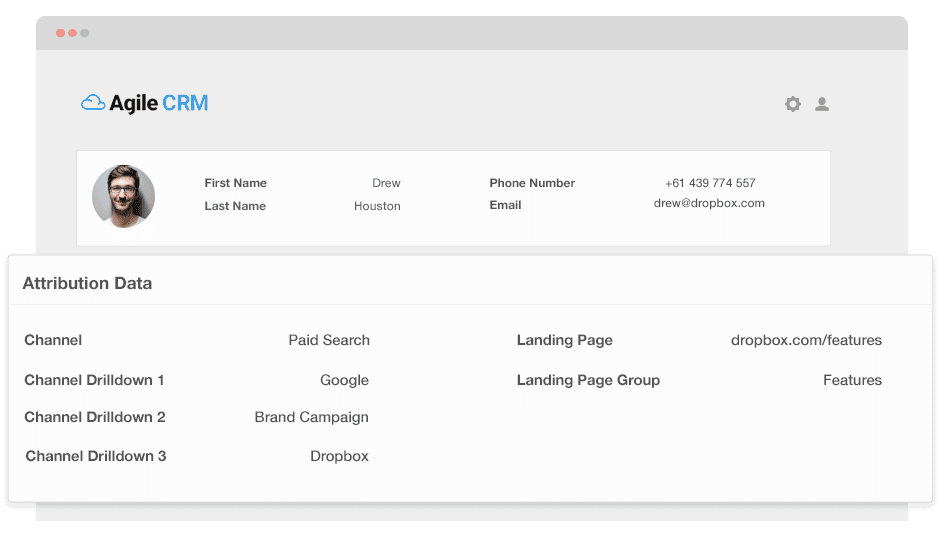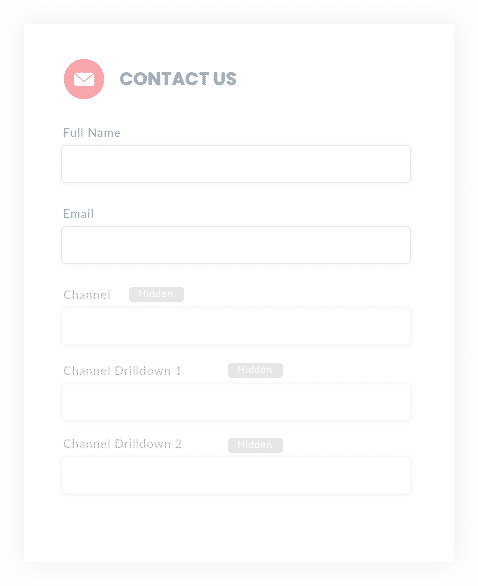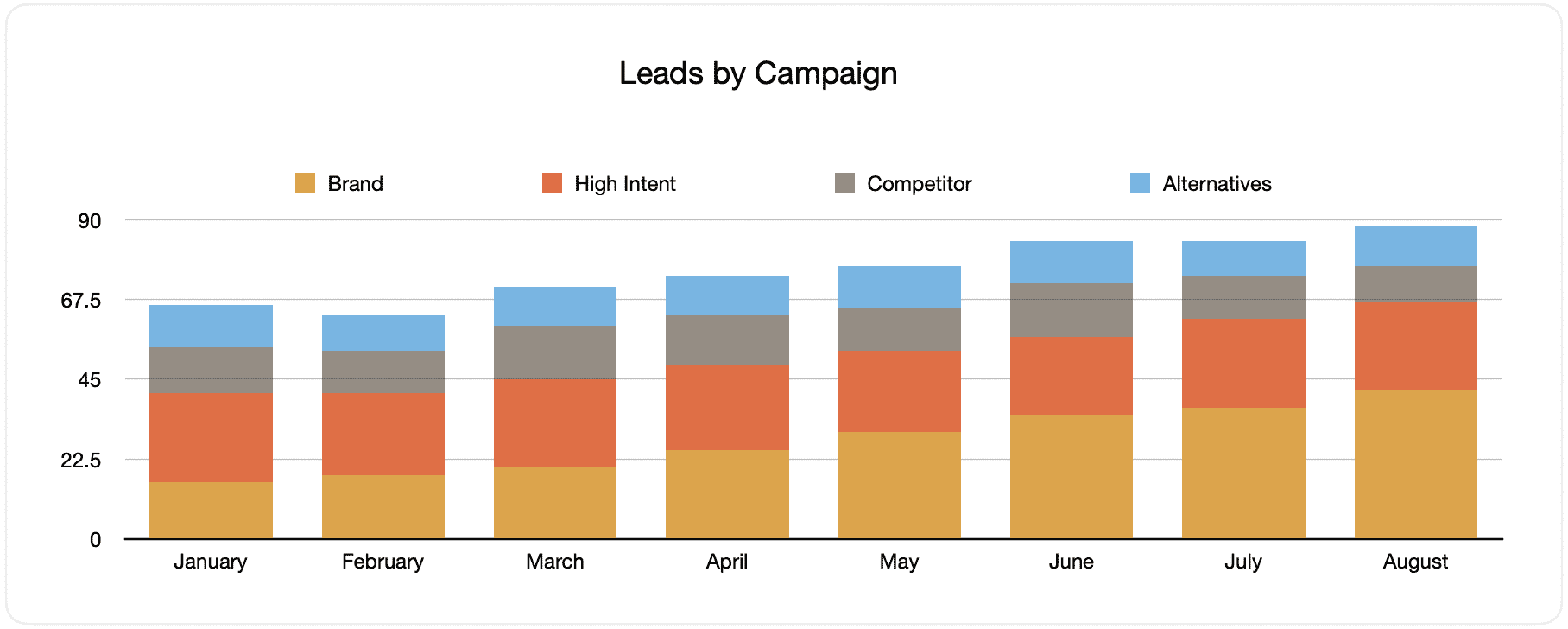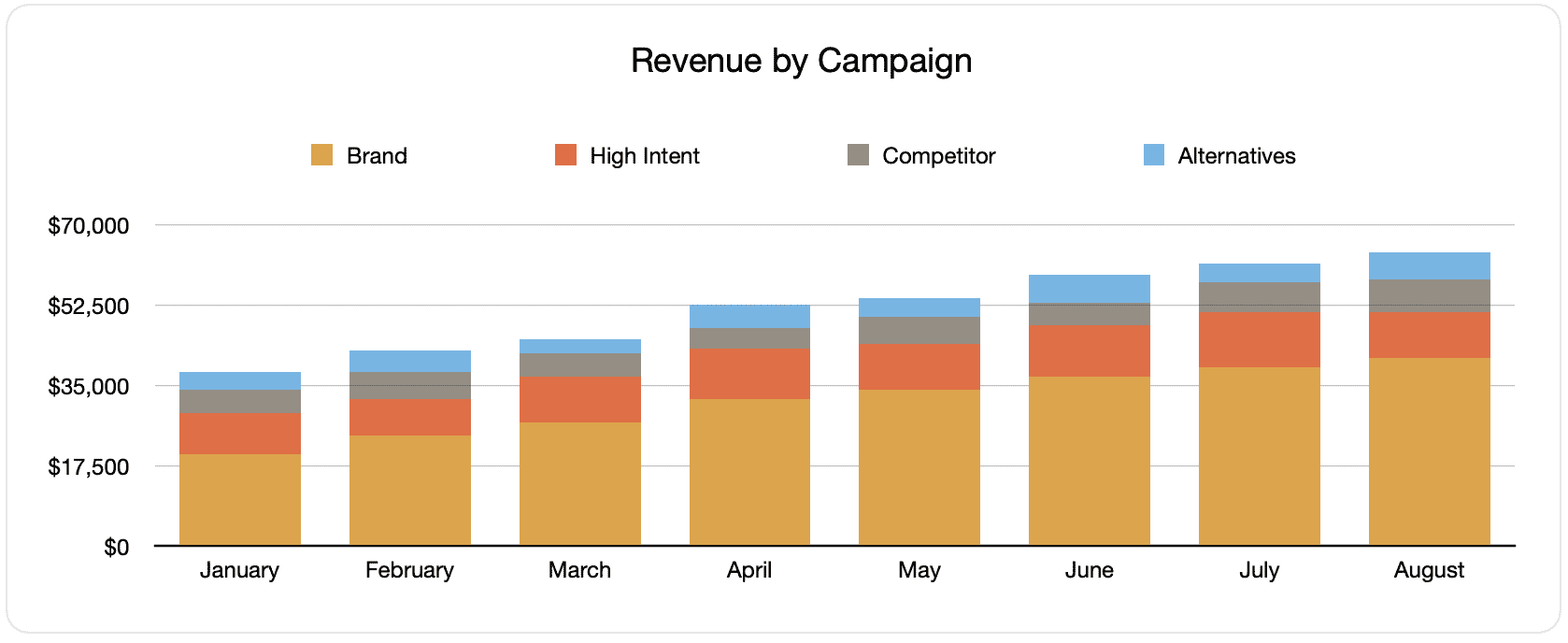The simplest way to track Google Ad campaigns in Agile CRM
4 steps to know which of your Google Ads campaigns attract leads, opportunities and customers by tracking Google Ad campaigns in Agile CRM.

Can you recognize which of your Google Ad campaigns is bringing in most of your customers, leads, and opportunities? If you can’t, how do you know if your campaigns are effective or not?
If you have Google Ads data in Agile CRM, you can view the campaign where all your leads, customers, and opportunities come from. You can also create reports in Agile CRM that display the campaigns generating a positive ROI and those that don’t.
In this post, you will learn how you can use Attributer to send Google Ads data into Agile CRM together with leads. You can use it to monitor your Google Ads campaigns’ performance.
What is Attributer?
Attributer is a piece of code you place on your website which scans some data to identify the origin of your visitor.
Attributer then groups each visitor according to a series of channels they came from, such as paid search, paid social, organic search, etc. This channel information is then stored as a cookie in the visitor’s browser and gets sent to Agile CRM every time that visitor submits a form on your site. Along with the channel information, the lead’s additional data entered in the form are also sent.
Whenever a new lead arrives in Agile CRM from your Google Ad campaigns, it may look something like this:

As displayed in the photo above, Attributer has sent the ‘paid search’ as channel information along with the campaign name, ad group name and the visitor’s landing page.
4 simple steps to track your Google Ads campaigns in Agile CRM
Attributer makes it easy to track Google Ads campaigns in Agile CRM. Here’s how it works:
1. Add UTM parameters to your Google Ads campaigns

The first thing to do is add UTM parameters to each ad so you can track your Google Ad campaigns in Agile CRM.
UTM parameters are extra bits of text that get added to the end of the URL you send to people from your campaigns.
For example, if the page you are sending someone to is attributer.io/integrations/agile-crm, then your final URL would look like this:
https://attributer.io/ integrations/agile-crm?utm_medium=paidsearch&utm_source=google&utm_campaign=brand-campaign
Even though you can build the UTM parameters how you like, the tried and proven best practice for Google Ads is the following:
- UTM Medium = Paid search
- UTM Source = Google
- UTM Campaign = The name of your Google Ads campaign
- UTM Term = The name of the ad group the ad belongs to
- UTM Content = The specific ad
Tagging your URLs with UTM parameters is simple and easy. Moreover, there are free tools online that can help you build them.
2. Add hidden fields to your forms

The next thing to do is add several hidden fields to your lead capture forms. The end-users can’t see these fields but still work behind the scenes, meaning tools like Attributer can work with them without visitors ever knowing.
The following are the hidden fields you need to add to your forms:
- Channel
- Channel Drilldown 1
- Channel Drilldown 2
- Channel Drilldown 3
- Landing Page
- Landing Page Group
The majority of form-building tools like Wix Forms, Gravity Forms, Jotform, etc., make adding hidden fields easy. You only must drag and drop a ‘hidden’ field type into your form. Further instruction on how to do this for various form builders can be found here.
3. Attributer writes Google Ads data into the hidden fields

When the hidden fields have been added, Attributer will populate them with the values you put in your UTM parameters every time a visitor completes a form on your website.
For instance, say I am a marketer at Dropbox, and an individual came to my site from one of my brand campaigns in paid search. Attributer would auto-fill the hidden fields like so:
- Channel = Paid search
- Channel Drilldown 1 = Google
- Channel Drildown 2 = Brand campaign
- Channel Drilldown 3 = Free account ad
Apart from the values from the UTM parameters, Attributer will also capture the visitor’s landing page (e.g., dropbox.com/features/cloud-storage) and the first landing page group (e.g., features).
4. Google Ads data is sent to Agile CRM

Lastly, whenever a visitor completes a form on your side, all of the Google Ads data, landing page data, and the lead’s name, email, phone number, etc., are sent into Agile CRM.
When the data has reached Agile CRM, you can build a report on them using the native reporting tools or if you have a BI tool like Tableau or Looker to run more advanced reports there.
Example reports you can create with Google Ads data in Agile CRM
Following the 4 steps above and using Attributer to capture Google Ads data in Agile CRM will let you run reports similar to the following:
1. Leads by campaign, ad group or ad

This chart displays the number of monthly generated leads from your Google Ads, sorted by the Google Ads campaign they came from.
When tracked over time, such as in the above chart, you can see the breakdown of monthly leads by campaign and the changes that happen over time. Ultimately, you’ll also view the effects of the various modifications and optimizations you applied to your Google Ads.
2. Customers by campaign, ad group or ad

This report shows the new monthly customers generated from your Google Ads, grouped by the channel they came from.
Interesting insights can be revealed when this chart is compared to the leads graph, like if there are campaigns that are bringing in leads that never convert into customers. When this happens, it can signify that this campaign isn't worth investing in anymore.
3. Revenue by campaign, ad group or ad

This document shows the monthly revenue generated, categorized by the channel where the customer originated from.
This report can be beneficial for computing the overall ROI of your marketing endeavors. For example, in the above chart, we can see that $236,156 in new revenue was brought from the paid social ads in March. If the customer spent less than this on the ads, it’s a positive ROI.
Why using Attributer is better than capturing raw UTM parameters
Why use Attibuter when there are other options for capturing UTM parameters and using them to track Google Ads in Agile CRM?
Here’s why:
1. Captures all traffic
Attributer is a fantastic tool for capturing UTM parameters and passing them into Agile CRM so you can track your Google Ads campaigns.
It also passes visitors’ information who arrive at your site using other channels like referral, direct, organic search, organic social, etc.
With this data, you can build reports in your CRM to see where your leads and customers originate and identify the source of ALL your leads, not just the ones coming from your Google Ads campaigns.
This data can be substantial, especially when your SEO efforts bring in most of your leads and customers instead of your Google Ads campaigns. Business owners like you would want to know this so you can invest wisely.
2. Remembers the data
Most UTM capturing tools and methods require the UTM parameters to be present on the page where the form is submitted. This can cause a problem when the page on which a visitor submits a form is different than the page they initially landed on.
For instance, someone clicks on one of your Google Ads and is then taken to a landing page for that campaign. After some deliberation, they decide that they want your product or service and click the ‘Get A Quote’ button, which leads them to a different page to complete your request form. This means that the page they completed a form on isn’t the exact page they first landed on your site. Hence, the UTM parameters are lost.
This won’t happen with Attributer because it stores the UTM parameters in a cookie in the user’s browser. So regardless of the page on which the form is completed, Attributer will always send the UTM parameters through.
Ultimately, this means that no matter the navigation activity of the user on your site, you’ll always be able to track them back to your Google Ads once they complete the form.
3. Provides cleaner data
One of the common issues that people encounter when they use other raw UTM parameter capturing tools is they end up with messy data that makes running accurate reports difficult.
For instance, imagine some of your Google Ads campaigns are tagged with UTM_Source= Google.com (capital T), others with UTM_Source= google (lowercase, no domain), and others with UTM_Source= adwords.
If you pass this raw UTM data into Agile CRM and use it to see the number of leads from your Google Ads campaigns, you’ll get three different sources you need to stitch together manually.
You don’t have to put up with this with Attributer because it considers the possibility of capitalization and other inconsistencies and would appoint leads to the paid search channel regardless.
4. Records landing page data
Ever wondered how many leads and customers come from your blog? How about those in-depth content pieces you spent hours working on?
Attributer captures both channel data and landing page (i.e., attributer.io/blog/capture-utm-parameters) and the landing page category (i.e., /blog).
With this data, you will see the performance of specific sections on your site (e.g., your blog) regarding leads, customers, and revenue generation.
And since Attributer captures both landing page and landing page group, you will be able to view your blog’s performance as a whole as well as zone in on individual blog posts.
Wrap up
If you think tracking the success of your Google Ads in Agile CRM will immensely help your business, then Attributer is an excellent solution.
It will capture UTM parameters behind your Google Ad campaigns and send them to Agile CRM, where you can create reports showing which campaigns each of your leads and customers have come from.
Moreover, it will also provide you with data on leads that arrive from other channels. This way, you can track the source of ALL your leads, not just the ones from Google Ads. Ultimately, you will reach informed decisions regarding where you need to invest to grow your business.
Best of all, have we mentioned that Attributer is free to start? So go ahead and start your free trial today!
Get Started For Free
Start your 14-day free trial of Attributer today!

About the Author
Aaron Beashel is the founder of Attributer and has over 15 years of experience in marketing & analytics. He is a recognized expert in the subject and has written articles for leading websites such as Hubspot, Zapier, Search Engine Journal, Buffer, Unbounce & more. Learn more about Aaron here.
